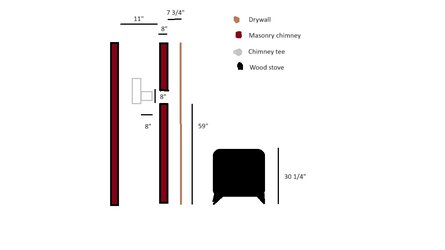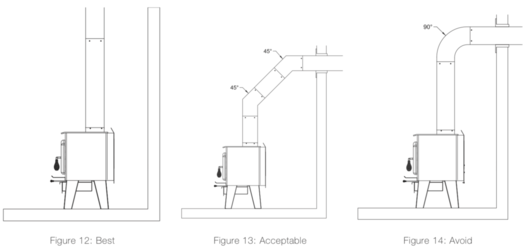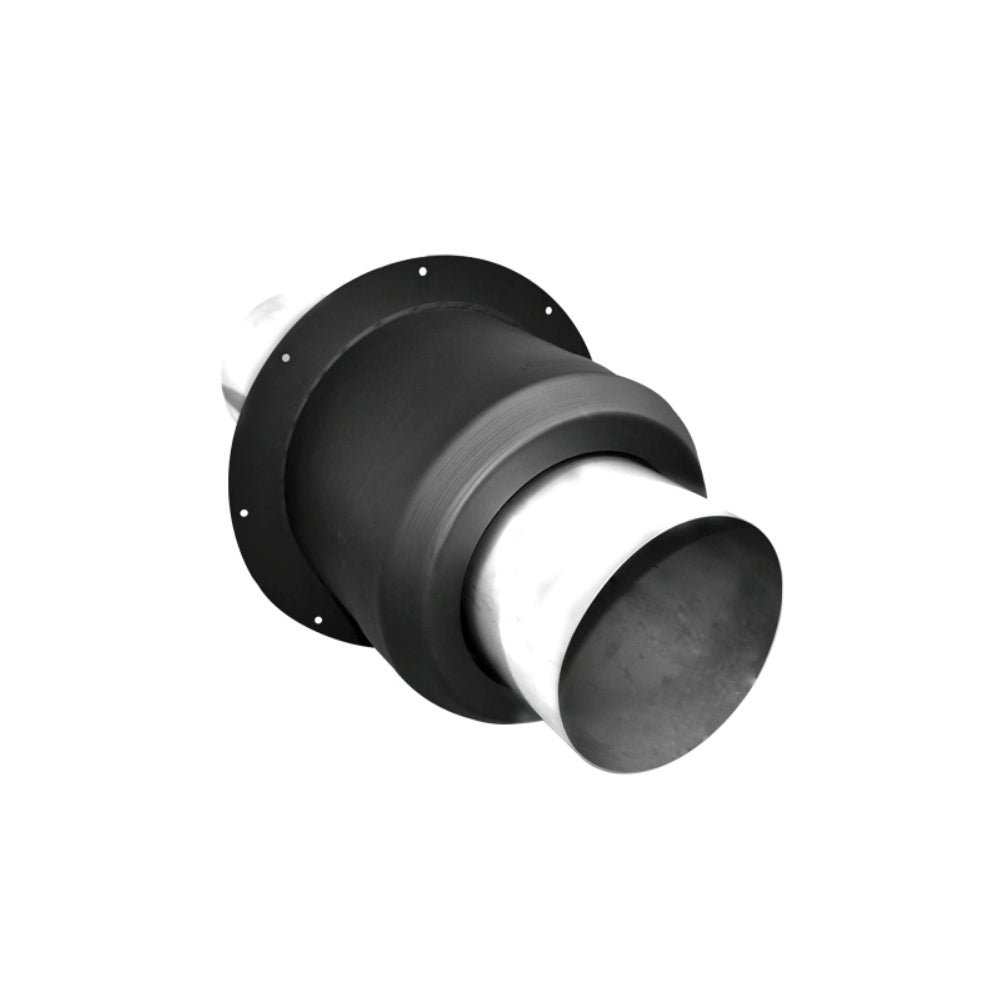Hi all, we moved into a home with an old Vermont Castings Vigilant stove that we are replacing with a new Drolet Escape 1800 as well as the old single wall stove pipe and adding a flue liner. We are doing this ourselves because we had a chimney sweep guy come to clean out the chimney and inspect and he recommended this based on cost and noticing me being somewhat handy. I've went over specs and did lots of research but can't seem to find an exact answer unto which piece I need to enter through drywall to masonry chimney. I was doing my shopping on northlineexpress.com and I think we're going with DuraVent DVL pipe for the stovepipe but didn't know if we need a wall thimble or a wall pass through. In any case, neither of those options on their site have enough length to enter into the chimney tee.
The overall length to go from drywall to back of masonry chimney is 26 3/4". When I talked to the lady at Northline Express, she mentioned that I could add another piece of pipe from the thimble to the tee but then I wouldn't be up to code with clearances which I don't truly understand. What can I do in this situation? Maybe I can butt the tee up the to the closest side of the chimney to the wall and then I should have roughly enough to connect? Because based on my math, it seems like I'm only a couple inches off from my requirement with the tee centered in the chimney, adding that 8" and 3" radius from the tee and the 10" from the wall thimble. Surely it's not uncommon to go through a drywall and gap to an older masonry chimney.
Also, talking stovepipe, I wanted to go with the 29" telescopic DVL piece but when I add the vertical height of the 90 degree elbow it puts me roughly one inch over my height limit which leads me to he horizontal stove pipe touching or not being level with top part of the horizontal hole in the chimney (I also talked to Drolet and they said I don't need a stove top adapter). In this case, if I opt for the 24" and 2"-5" piece would it look bad to have an extra seam so close to the elbow or is it hardly noticeable? I posted a picture for dimension references and links below to the possible pieces. Sorry for the long post as I want to make sure everything is done correctly.
Wall pass through: https://www.northlineexpress.com/6-duraliner-wall-pass-through-6dlr-wpt-6052.html
Wall thimble: https://www.northlineexpress.com/6-duraliner-masonry-thimble-with-slip-connector-6dlr-mtsc-6051.html
Chimney tee: https://www.northlineexpress.com/6-duraflexss-tee-with-cap-6dfs-t-6573.html
29" Telescoping piece: https://www.northlineexpress.com/6-...escoping-black-stove-pipe-6dvl-46ta-6722.html
90 degree elbow: https://www.northlineexpress.com/6-dvl-90-degree-double-wall-black-elbow-6dvl-e90-6736.html
24" piece: https://www.northlineexpress.com/6-x-24-dvl-double-wall-black-stove-pipe-6dvl-24.html
2" - 5" piece: https://www.northlineexpress.com/6-...justable-black-stove-pipe-6dvl-6adj-6734.html

The overall length to go from drywall to back of masonry chimney is 26 3/4". When I talked to the lady at Northline Express, she mentioned that I could add another piece of pipe from the thimble to the tee but then I wouldn't be up to code with clearances which I don't truly understand. What can I do in this situation? Maybe I can butt the tee up the to the closest side of the chimney to the wall and then I should have roughly enough to connect? Because based on my math, it seems like I'm only a couple inches off from my requirement with the tee centered in the chimney, adding that 8" and 3" radius from the tee and the 10" from the wall thimble. Surely it's not uncommon to go through a drywall and gap to an older masonry chimney.
Also, talking stovepipe, I wanted to go with the 29" telescopic DVL piece but when I add the vertical height of the 90 degree elbow it puts me roughly one inch over my height limit which leads me to he horizontal stove pipe touching or not being level with top part of the horizontal hole in the chimney (I also talked to Drolet and they said I don't need a stove top adapter). In this case, if I opt for the 24" and 2"-5" piece would it look bad to have an extra seam so close to the elbow or is it hardly noticeable? I posted a picture for dimension references and links below to the possible pieces. Sorry for the long post as I want to make sure everything is done correctly.
Wall pass through: https://www.northlineexpress.com/6-duraliner-wall-pass-through-6dlr-wpt-6052.html
Wall thimble: https://www.northlineexpress.com/6-duraliner-masonry-thimble-with-slip-connector-6dlr-mtsc-6051.html
Chimney tee: https://www.northlineexpress.com/6-duraflexss-tee-with-cap-6dfs-t-6573.html
29" Telescoping piece: https://www.northlineexpress.com/6-...escoping-black-stove-pipe-6dvl-46ta-6722.html
90 degree elbow: https://www.northlineexpress.com/6-dvl-90-degree-double-wall-black-elbow-6dvl-e90-6736.html
24" piece: https://www.northlineexpress.com/6-x-24-dvl-double-wall-black-stove-pipe-6dvl-24.html
2" - 5" piece: https://www.northlineexpress.com/6-...justable-black-stove-pipe-6dvl-6adj-6734.html

Last edited:




